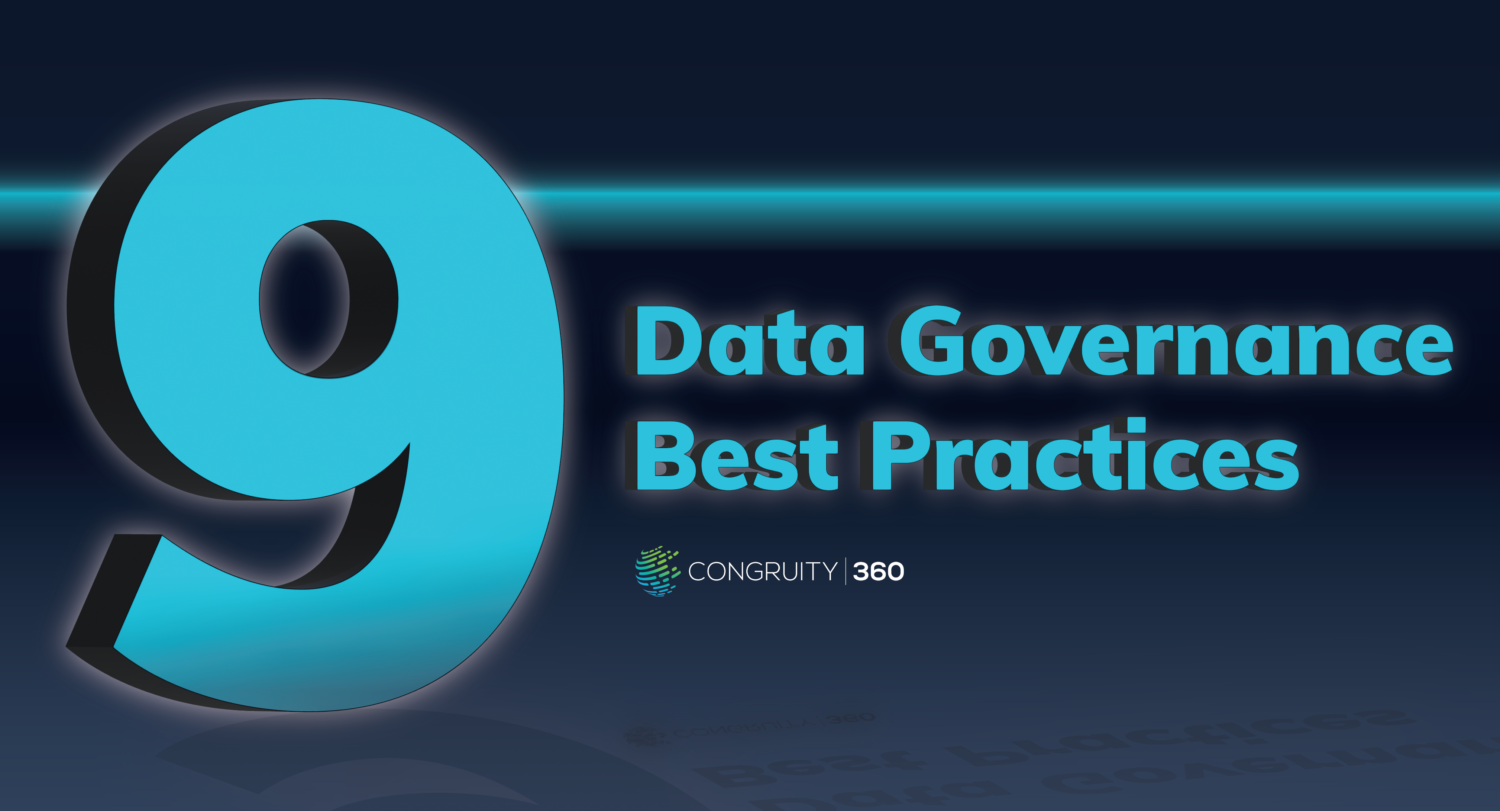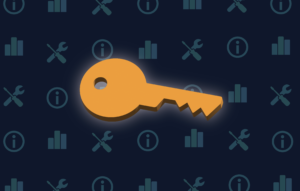Blog Team
Congruity360 Marketing
Data governance is rapidly evolving, becoming a critical strategic component for organizations aiming to enhance privacy programs and safeguard personal information. With the dramatic increase in data generation and consumption, businesses are recognizing the immense value that lies within their data assets.
However, this value can only be fully realized when data is effectively managed and governed. A robust data governance framework provides the necessary structure, policies, procedures, and standards to ensure data quality, consistency, and security. This evolution of data governance is not only helping businesses meet compliance requirements but also promoting trust and confidence in the way personal information is handled.
What is a Data Governance Framework?
A data governance framework is a comprehensive structure that outlines how an organization will manage, maintain, and utilize its data. It establishes clear policies, procedures, roles, responsibilities, and standards that govern how data is collected, stored, processed, and shared.
This framework acts as a roadmap guiding the organization towards improved data quality, consistency, and security, while ensuring compliance with relevant regulations such as the NIST privacy framework.
Incorporating the NIST Privacy Framework into an organization’s data governance strategy can enhance the robustness of privacy protection measures. It aids in establishing clear guidelines about how personal data should be handled, thus promoting transparency and accountability. A strong alignment between an organization’s data governance framework and the NIST Privacy Framework not only boosts compliance efforts but also mitigates privacy risks, thereby fostering trust among stakeholders, customers, and regulators.
Why Does Data Governance Matter?
Data governance is more than just a business necessity – it is a strategic imperative. As organizations increasingly leverage data as a key business asset, the importance of effectively managing, safeguarding, and utilizing this data cannot be overstated. It enhances trust in data, enabling stakeholders to make informed decisions.
By implementing data governance best practices, organizations can drive operational efficiency, mitigate risks, and unlock the true value of their data assets – ultimately fostering a data-driven culture that propels business growth.
9 Data Governance Best Practices
Understanding and implementing data governance best practices is pivotal for organizations in today’s data-intensive business environment. By adhering to these practices, organizations can significantly enhance data quality, consistency, and security, which in turn leads to improved decision-making, regulatory compliance, and stakeholder trust.
Assessing Current Data Governance
Before diving into the implementation of data governance best practices, it’s crucial for an organization to assess its current data governance framework and processes. This involves a thorough evaluation of the current policies, procedures, roles, and responsibilities that govern the organization’s data management.
Key considerations should include the quality, consistency, and security of the data, as well as the effectiveness of data privacy measures. The goal of this assessment is to identify any gaps or weaknesses in the existing framework that could potentially hamper data quality or expose the organization to privacy risks or non-compliance issues.
Analyzing the current state of data governance allows the organization to understand how well it is aligning with the NIST Privacy Framework and other relevant standards. This assessment forms the basis for developing a comprehensive and effective data governance strategy that supports strategic decision-making and drives business growth.
Developing a Data Governance Roadmap
Once the current state of data governance has been thoroughly assessed, the next step is to develop a comprehensive data governance roadmap. This charts the course for effectively managing, protecting, and leveraging the organization’s data assets. This should outline the strategic objectives of the data governance initiative, sets clear milestones and performance metrics, and identifies the necessary resources and stakeholders.
A well-designed roadmap considers both short-term and long-term goals, enabling a phased implementation of data governance best practices. It should be flexible enough to adapt to the evolving data landscape, yet robust enough to ensure consistent data quality, privacy, and compliance. A successful data governance roadmap is not a static document but a living strategy that evolves with the organization’s data needs, regulatory changes, and business objectives.
Data Quality and Lifecycle Management
One of the key components of data governance best practices is implementing strategies for data quality and lifecycle management. This involves maintaining high-quality data that is accurate, complete, consistent, and relevant for the organization’s needs.
Data quality management includes data profiling, standardization, validation, and de-duplication. In addition to quality, it’s essential to manage the whole lifecycle of data from creation or acquisition, through its active use, to its eventual retirement or disposal. Lifecycle management ensures that data remains useful and secure throughout its existence in the organization, considering factors such as data retention, archiving, and disposal policies.
Efficient data quality and lifecycle management are both crucial components of data governance best practices to help avoid costly errors, enhance decision-making capabilities, and maintain regulatory compliance.
Engaging Stakeholders and Teams
Successful implementation of a data governance program requires the active involvement and commitment of stakeholders and teams across the organization. The engagement process should be inclusive, gathering input from diverse roles and functions such as data management, IT, legal, compliance, and business units.
This broad engagement facilitates the understanding and acceptance of data governance best practices and helps to align them with the organization’s overall strategic objectives. Regular communication regarding the progress and benefits of the data governance initiative is key to keeping stakeholders informed and involved.
Additionally, setting up a cross-functional data governance committee or council can be an effective way to ensure ongoing collaboration, responsibility distribution, and decision-making related to data governance. By actively engaging stakeholders and teams, organizations can foster a culture that values data as a strategic asset and recognizes the importance of effective data governance.
Establishing Data Governance Policies and Standards
An integral part of implementing data governance best practices involves the establishment of clear data governance policies and standards. These policies should define the organization’s expectations for data quality, privacy, security, and compliance. It’s important these policies are comprehensive in scope, covering aspects such as data creation, storage, access, usage, sharing, and disposal.
The standards, on the other hand, provide the operational guidelines for achieving the policies’ objectives. They set out specific procedures and methods for data management, ensuring consistency and uniformity across the organization. Examples of standards include data classification schemes, metadata standards, data quality rules, and data security protocols.
Both policies and standards should be regularly reviewed and updated to respond to changes in the organization’s data environment, regulatory requirements, and business needs.
Deploying Data Governance Tools
Organizations should consider deploying appropriate data governance tools to assist in effective data governance and data management. These tools help automate data governance tasks, streamline processes, and ensure accurate tracking and reporting. Data governance tools can range from data quality tools for monitoring and improving the quality of data, to metadata management tools for managing data about data, and data lineage tools for tracking the entire journey of data elements.
They may also include data catalog tools for organizing and finding data, and data privacy tools for ensuring compliance with data privacy regulations. Choosing the right tools depends on the organization’s specific needs, the complexity of its data environment, and its strategic objectives.
Ensuring Data Governance Sustainability
For data governance initiatives to deliver long-term value, they must be sustainable. This involves the constant monitoring and refining of the data governance framework to align with evolving business needs and regulatory requirements.
- Regular audits should be conducted to assess the efficacy of data governance practices, identify areas for improvement, and ensure compliance with standards and policies.
- Training programs must be implemented to enhance the data literacy of employees and encourage adherence to data governance best practices.
- A feedback loop should be established to incorporate insights from different stakeholders and continuously improve the data governance framework.
Organizations should also consider the scalability of their data governance tools and processes to accommodate future growth and complexity. By ensuring the sustainability of data governance, organizations can continue to reap the benefits of high-quality, reliable data, drive informed decision-making, and sustain business growth.
Measuring the Success of Data Governance
Evaluating the success of data governance is an essential step to ensure that the implemented practices are yielding the desired outcomes. Key performance indicators (KPIs) should be established to quantitatively measure the effectiveness of data governance initiatives. These might include data quality metrics such as:
- Percentage of data errors
- Data accessibility metrics like the time spent to find relevant data
- Compliance metrics such as the number of data breaches
Regularly surveying stakeholders about their satisfaction with data quality, access, and reliability can also provide valuable qualitative insights. Organizations should also assess the return on investment (ROI) of their data governance initiative by considering the cost savings from improved efficiency, the revenue generated from data-driven decisions, and the risk reduction from enhanced compliance.
These measurements should align with the organization’s strategic objectives to ensure that data governance is contributing meaningfully to business goals. Through consistent and comprehensive measurement, organizations can identify strengths and weaknesses in their data governance efforts, inform future strategies, and continuously enhance their data governance performance.
Building a Culture of Data Governance
As you’ve seen throughout these best practices, cultivating a culture that values data governance is paramount for the success of any data governance initiative. It involves fostering an environment where everyone understands the importance of high-quality, reliable data and their role in maintaining it.
This begins with leadership demonstrating commitment to data governance and cascading the message down through all levels of the organization. Training and education programs should be implemented to enhance employees’ data literacy and understanding of data governance best practices. Regular communication about the benefits and successes of data governance can also reinforce its importance and encourage adherence to established policies and standards. Recognizing and rewarding adherence to data governance best practices can motivate employees to take ownership of data quality and compliance.
Integrating data governance into the organization’s core values and strategic objectives can further embed it into the organizational culture. By building a culture of data governance, organizations can ensure the sustainability of their data governance initiatives, drive data-driven decision-making, and achieve superior business outcomes.
Ready to Implement an Effective Data Governance?
Embarking on the data governance journey may seem overwhelming, but by following the best practices outlined in this document, organizations can establish a solid foundation for effective data governance and build a culture around data governance. It’s important to remember it is an ongoing process and requires constant monitoring and improvement.









